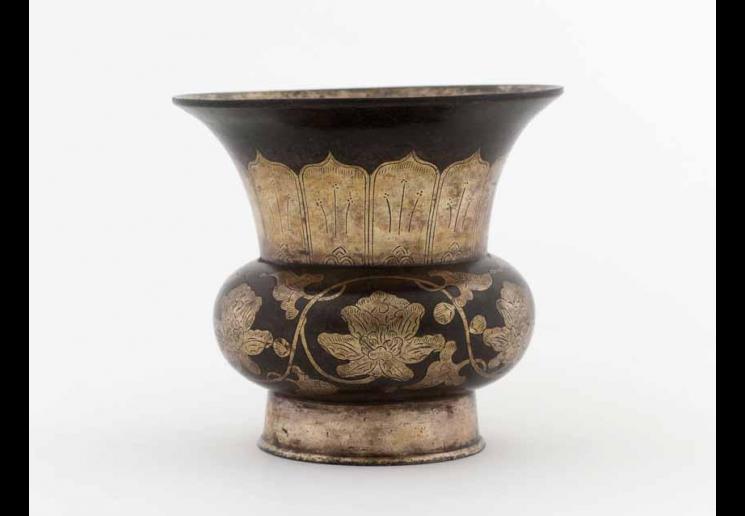COMPRISING OVER a thousand pieces, the Musée Cernuschi collection is one of the largest in the world of bronzes from the Song to the Qing dynasty. In China, beginning with the very first dynasties, bronze was a much-valued material for the production of ritual objects. In the 10th century, after several hundred years of Buddhist ascendancy, the Song dynasty (960-1279) set out to consolidate and strengthen its authority by placing new emphasis on the ancient rites linked to the Imperial Ancestors, Heaven and Earth. Numerous scholars dedicated themselves to identification and cataloguing of old ritual vessels, together with deciphering their inscriptions. Bronzes, after paintings and calligraphy, were the most sought after and expensive collectors’ items and there was a proliferation of manuals of restoration, imitation and outright forgery. Soon, the fashion for ancient forms and motifs spread into other fields and permeated all Chinese art, including everyday utensils, decorative and scholars’ objects, as well as religious items.
The works on show come from the collection of Henri Cernuschi (1821-1896), who in the course of his first year in China in 1872, bought works of art from dealers in Shanghai, Yangzhou and Peking. This is the first exhibition in France devoted to a still little-studied field. A wide range of Chinese bronzes from the Musée Cernuschi collection are included in the exhibition and many of the items are on show for the first time.
Until 19 January 2014 at Musée Cernushi, 7 Avenue Velasquez, 75008 Paris, www.cernuschi.paris.fr. A catalogue in French, Euro 39, accompanies the exhibition.
Bronzes of Imperial China from the 10th to 19th Century

